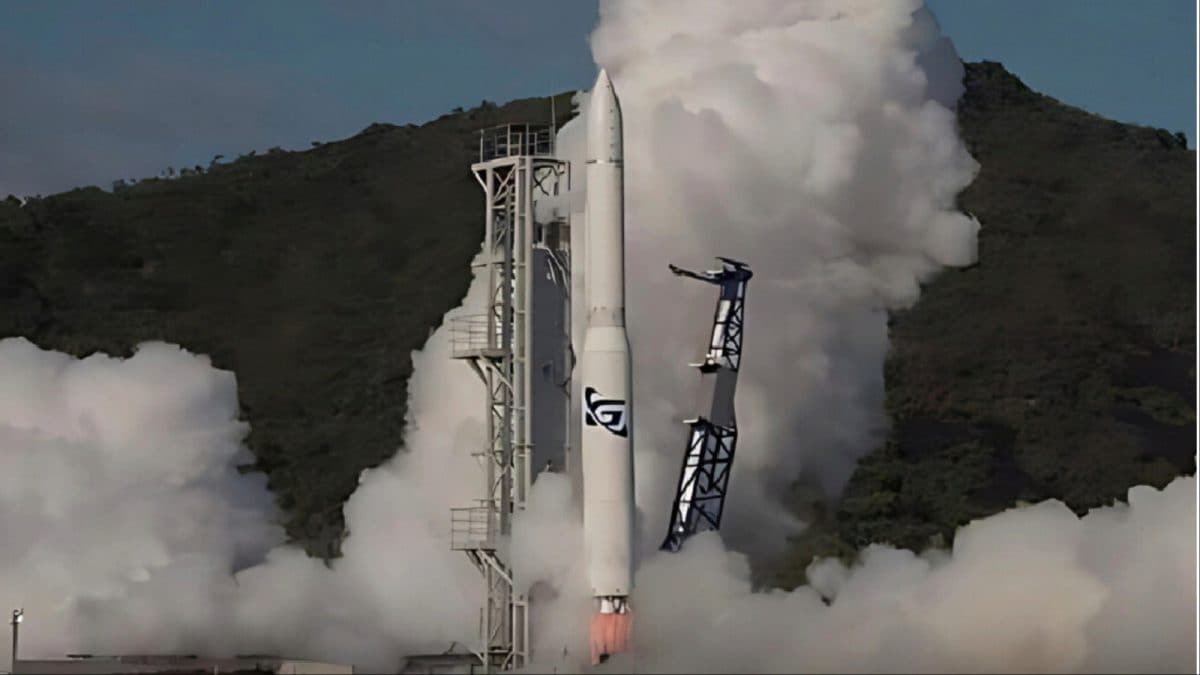Last Updated:July 30, 2025, 17:32 IST
The Earth observation satellite was launched aboard the GSLV-F16 rocket from the second launch pad at 5:40 pm IST

The satellite is expected to help scientists monitor climate change, disaster response, and agriculture patterns across the globe
In a major step forward in India–US space collaboration, the NASA-ISRO Synthetic Aperture Radar (NISAR) satellite successfully lifted off from Sriharikota on Wednesday.
The Earth observation satellite, jointly developed by the Indian Space Research Organisation (ISRO) and the Aeronautics and Space Administration (NASA), was launched aboard the GSLV-F16 rocket from the second launch pad at 5:40 pm IST.
The launch marked a significant moment in space science and diplomacy, with NISAR aiming to provide high-resolution data on changes in the Earth’s land, ice, and oceans.
Weighing 2,393 kg, NISAR will operate in a Sun-synchronous polar orbit and use dual-frequency radar systems to study natural processes such as glacier movements, deforestation, coastline changes, and earthquakes. The satellite is expected to help scientists monitor climate change, disaster response, and agriculture patterns across the globe.
This is the first time a GSLV rocket has carried a satellite into a Sun-synchronous orbit, typically handled by Polar Satellite Launch Vehicles (PSLVs). ISRO said this mission was the result of over a decade of collaboration, involving the exchange of technology, hardware, and expertise between the two space agencies.
The NISAR satellite is equipped with two radar bands: L-Band provided by NASA and S-Band developed by ISRO. Together, these enable the use of SweepSAR technology, allowing the satellite to produce high-resolution images every 12 days, covering land, ice, and ocean surfaces.
Following the successful launch, the mission now enters its commissioning phase. ISRO had said the first 90 days will be dedicated to In-Orbit Checkout, during which the systems onboard the satellite will be tested and prepared for science operations.
ISRO built the spacecraft and launch system, while NASA provided critical instruments including the L-band radar, high-speed data link, and GPS receiver. NASA will also support orbit manoeuvres and radar operations, while both agencies will operate ground stations to receive and process the satellite data.
NISAR is the 18th flight of a GSLV rocket and the 12th using an indigenous cryogenic upper stage. It is also the 102nd launch from Sriharikota. The mission is expected to have an operational life of five years.
ISRO said NISAR would serve as a valuable resource for the global scientific community, offering detailed insights into Earth’s dynamic systems.
The News Desk is a team of passionate editors and writers who break and analyse the most important events unfolding in India and abroad. From live updates to exclusive reports to in-depth explainers, the Desk d...Read More
The News Desk is a team of passionate editors and writers who break and analyse the most important events unfolding in India and abroad. From live updates to exclusive reports to in-depth explainers, the Desk d...
Read More
Odisha (Orissa), India, India
First Published:News india ISRO-NASA's Earth-Observing Satellite 'NISAR' Lifts Off From Sriharikota
Disclaimer: Comments reflect users’ views, not News18’s. Please keep discussions respectful and constructive. Abusive, defamatory, or illegal comments will be removed. News18 may disable any comment at its discretion. By posting, you agree to our Terms of Use and Privacy Policy.
Read More

 19 hours ago
19 hours ago

















